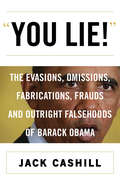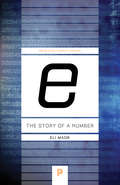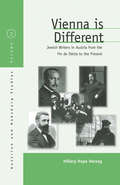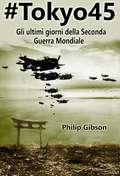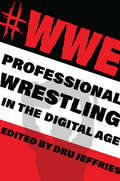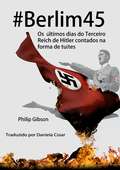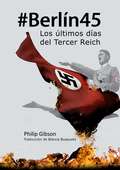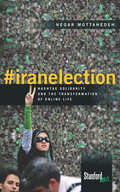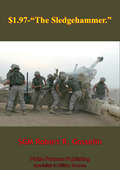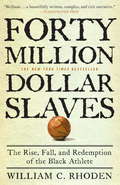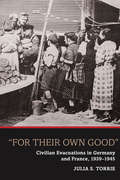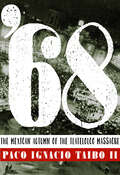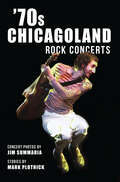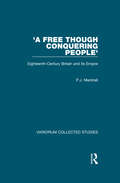- Table View
- List View
"You Are Not Expected to Understand This": How 26 Lines of Code Changed the World
by Kelly ChudlerLeading technologists, historians, and journalists reveal the stories behind the computer coding that touches all aspects of life—for better or worseFew of us give much thought to computer code or how it comes to be. The very word “code” makes it sound immutable or even inevitable. “You Are Not Expected to Understand This” demonstrates that, far from being preordained, computer code is the result of very human decisions, ones we all live with when we use social media, take photos, drive our cars, and engage in a host of other activities.Everything from law enforcement to space exploration relies on code written by people who, at the time, made choices and assumptions that would have long-lasting, profound implications for society. Torie Bosch brings together many of today’s leading technology experts to provide new perspectives on the code that shapes our lives. Contributors discuss a host of topics, such as how university databases were programmed long ago to accept only two genders, what the person who programmed the very first pop-up ad was thinking at the time, the first computer worm, the Bitcoin white paper, and perhaps the most famous seven words in Unix history: “You are not expected to understand this.”This compelling book tells the human stories behind programming, enabling those of us who don’t think much about code to recognize its importance, and those who work with it every day to better understand the long-term effects of the decisions they make.With an introduction by Ellen Ullman and contributions by Mahsa Alimardani, Elena Botella, Meredith Broussard, David Cassel, Arthur Daemmrich, Charles Duan, Quinn DuPont, Claire L. Evans, Hany Farid, James Grimmelmann, Katie Hafner, Susan C. Herring, Syeda Gulshan Ferdous Jana, Lowen Liu, John MacCormick, Brian McCullough, Charlton McIlwain, Lily Hay Newman, Margaret O’Mara, Will Oremus, Nick Partridge, Benjamin Pope, Joy Lisi Rankin, Afsaneh Rigot, Ellen R. Stofan, Lee Vinsel, Josephine Wolff, and Ethan Zuckerman.
"You Lie!": The Evasions, Omissions, Fabrications, Frauds and Outright Falsehoods of Barack Obama
by Jack CashillA devastating catalog of Barack Obama’s numerous evasions, misleading statements and blatant lies, from statements in his national bestseller Dreams from My Father to “You can keep your health plan,” PolitiFact’s 2013 “Lie of the Year.”During President Obama’s address to Congress in November 2009, Representative Joe Wilson of South Carolina shouted, “You lie!” As Jack Cashill details, the president has been lying about his personal history and his political philosophy from the beginning of his political career. Yet throughout his meteoric rise and the first five years of his presidency, the liberal media turned a blind eye to his numerous evasions, contradictions, misstatements, deceptions, untruths, and outright falsehoods.It wasn’t until the disastrous Obamacare rollout that the president’s lies caught up with him. Finally, it was impossible even for the mainstream media to ignore the president’s repeated assertions that all Americans could keep their health care plans and family doctors if they so chose. In You Lie! conservative journalist and author Jack Cashill provides a devastating compendium of the president’s false and misleading statements on matters great and small, from the deliberate distortions in his celebrated memoir, Dreams from My Father, to his rise to the White House and his years as president.
"You Talkin' to Me?": The Definitive Guide to Iconic Movie Quotes
by Brian AbramsThis deep dive into hundreds of Hollywood&’s most iconic and beloved lines is a must-have for every film buff."You Talkin&’ to Me?" is a fun, fascinating, and exhaustively reported look at all the iconic Hollywood movie quotes we know and love, from Casablanca to Dirty Harry and The Godfather to Mean Girls. Drawing on interviews, archival sleuthing, and behind-the-scenes details, the book examines the origins and deeper meanings of hundreds of film lines: how they&’ve impacted, shaped, and reverberated through the culture, defined eras in Hollywood, and become cemented in the modern lexicon. Packed with film stills, sidebars, lists, and other fun detours throughout movie history, the book covers all genres and a diverse range of directors, writers, and audiences.
"e": The Story of a Number
by Eli MaorThe interest earned on a bank account, the arrangement of seeds in a sunflower, and the shape of the Gateway Arch in St. Louis are all intimately connected with the mysterious number e. In this informal and engaging history, Eli Maor portrays the curious characters and the elegant mathematics that lie behind the number. Designed for a reader with only a modest mathematical background, this biography brings out the central importance of e to mathematics and illuminates a golden era in the age of science.
"vienna Is Different"
by Hillary HopeAssessing the impact of fin-de-siècle Jewish culture on subsequent developments in literature and culture, this book is the first to consider the historical trajectory of Austrian-Jewish writing across the 20th century. It examines how Vienna, the city that stood at the center of Jewish life in the Austrian Empire and later the Austrian nation, assumed a special significance in the imaginations of Jewish writers as a space and an idea. The author focuses on the special relationship between Austrian-Jewish writers and the city to reveal a century-long pattern of living in tension with the city, experiencing simultaneously acceptance and exclusion, feeling "unheimlich heimisch" (eerily at home) in Vienna.
#Berlin45 Les derniers jours du Troisième Reich racontés sous la forme d’un fil Twitter
by Philip Gibson Vincente Morlet« Et si les réseaux sociaux avaient existé lors de la Seconde Guerre mondiale ? » Voici l'histoire captivante des vingt derniers jours du Troisième Reich d'Hitler racontés sous la forme d'un fil Twitter. Parmi les auteurs de tweets : Hitler, Churchill, Truman, Joukov, Eisenhower, Goebbels, Bormann, Weidling, Krebs, Keitel, Jodl, Patton, Bradley, Heinrici, Koniev, Tchouïkov, ou encore Eva Braun. Le roman s'ouvre sur l'annonce de la mort du président Franklin D. Roosevelt et les réactions qui s'ensuivent. L'histoire relate ensuite les réflexions et les décisions des principaux protagonistes lors de la prise de Vienne, la bataille des hauteurs de Seelow, la libération des camps de concentration, la bataille de Berlin, la mort d'Hitler et, enfin, la capitulation des forces du Troisième Reich.
#Berlin45: Die letzten Tage des Dritten Reiches
by Philip Gibson Nada TrbonjaBuchbeschreibung: Dies ist kein Buch im üblichen Format. Was wäre, wenn es da Soziale Medien während Zweites Weltkrieges gab? Das ist eine zwingende Geschichte von den letzten 20 Tagen von Hitlers Dritten Reiches erzählt in der Form von Twitter-Feeds mit täglichen Tweets und eigentlichen Aussagen von Hitler, Churchill, Truman, Zhukov, Eisenhower, Goebbels, Bormann, Weidling, Krebs, Keitel, Jodl, Patton, Bradley, Heinrici, Konev, Chuikov, Eva Braun und vielen anderen. Die Erzähung beginnt mir der Meldung und den diesbezüglichen Reaktionen über den Tod des Präsidenten Franklin D. Roosevelts, gefolgt von den Gedanken und Taten der Hauptbeteiligten, handelt dann von der Besetzung Wiens und dem Kampf um die Seelower Höhen. Weiter geht es mit der Thematisierung der Konzentrationsläger und ihrer Befreiung, dem darauf folgenden Kampf um Berlin und dem Tod Hitlers bis hin zur Kapitulation der Wehrmacht des Dritten Reiches.
#Berlino45: Gli Ultimi Giorni del Terzo Reich
by Philip Gibson Alexander W. PowellCosa sarebbe successo se ci fossero stati i social network durante la Seconda Guerra Mondiale? Questo non è un libro nel solito formato. È l'avvincente storia degli ultimi 20 giorni del Terzo Reich di Hitler raccontati sottoforma di feed di Twitter, come tweet giornalieri e affermazioni reali di Hitler, Churchill, Truman, Zhukov, Eisenhower, Goebbels, Eva Braun e molti altri. La storia comincia con l'annuncio e le reazioni alla morte del presidente Frankin D. Roosevelt e segue i pensieri e le azioni dei partecipanti principali attraverso la cattura di Vienna, la Battaglia della Alture di Seelow, la liberazione dei campi di concentramento, la Battaglia di Berlino, la morte di Hitler e la resa finale delle forze del Reich.
#Presidents: Follow the Leaders
by John Bailey OwenWas Teddy Roosevelt a cute kid in his Throwback Thursday photos? Whose no-shave November facial hair is better, Lincoln's or Taft's? And just how many selfies did JFK take in the oval office? From how they grew up to how they led, learn what historians know about these incredible leaders and find out what they're saying to each other! Follow the leaders!
#TIL: Hilarious, Entertaining, and Educational Trivia
by Stephen SpignesiFrom Abraham Lincoln to Babe Ruth, movies and music to politics and biology, New York Times bestselling author Stephen Spignesi compiles five hundred facts in this addictive bathroom reader trivia book. From history and science to sports and literature, New York Times bestselling author Stephen Spignesi offers eye-opening trivia in 500 facts inspired by the viral social media acronym TIL used on Twitter, Reddit, Instagram, and Facebook. #TIL: Today I Learned is sure to intrigue even the most jaded know-it-alls and walking encyclopedias, including little-known anecdotes and stories involving some of history&’s most famous people, places, and things, like: Stephen KingDowntown Abbey Elton John World War II Jennifer Aniston John Wayne GacyCall of Duty Salem witch trials Benjamin Franklin &“The Star Spangled Banner&” Jesus Christ James Bond Alexander Hamilton O.J. SimpsonTitanic George W. Bush KFCLord of the Rings UFO sightings &“Bohemian Rhapsody&” Donald TrumpStar Trek Stephen Hawking Pocahantas Oprah WinfreyThe Wizard of Oz Genghis Khan Vincent Van GoghAnd many more!
#Tokyo45 Gli ultimi giorni della Seconda Guerra Mondiale
by Laura Fenati Philip GibsonDescrizione del libro E se durante la Seconda Guerra Mondiale fossero esistiti i cosiddetti 'social'? #Tokyo45 Gli ultimi giorni della Seconda Guerra Mondiale Il formato di questo libro non è il solito che ci passa tra le mani. Esso tratta l'avvincente storia degli ultimi giorni della Seconda Guerra Mondiale raccontata in forma di messaggi Twitter con dichiarazioni veritiere dei principali personaggi del tempo. La storia inizia con la conquista strategica dell'isola giapponese di Okinawa e continua con i pensieri e le azioni di tali personaggi principali e prosegue con il progetto di invasione del Giappone, la difesa giapponese, il Progetto Manhattan, il primo esperimento atomico, la difesa con i Kamikaze, la Conferenza di Potsdam, la sconfitta elettorale di Churchill, la decisione di sganciare le bombe atomiche, la tentata rivolta di palazzo e la capitolazione finale giapponese.
#Wwe: Professional Wrestling in the Digital Age (The Year's Work: Studies in Fan Culture and Cultural Theory)
by Dru JeffriesThe millions of fans who watch World Wrestling Entertainment (WWE) programs each year are well aware of their role in building the narrative of the sport. #WWE: Professional Wrestling in the Digital Age explores the intersections between media, technology, and fandom in WWE's contemporary programming and business practices. In the Reality Era of WWE (2011 to the present), wrestling narratives have increasingly drawn on real-life personalities and events that stretch beyond the story-world created and maintained by WWE. At the same time, the internet and fandom have a greater influence on the company than ever before. By examining various sites of struggle and negotiation between WWE executives and in-ring performers, between the product and its fans, and between the company and the rest of the wrestling industry, the contributors to this volume highlight the role of various media platforms in shaping and disseminating WWE narratives. Treating the company and its product not merely as sports entertainment, but also as a brand, an employer, a company, a content producer, and an object of fandom, #WWE conceptualizes the evolution of professional wrestling's most successful company in the digital era.
#berlim45 - Os Últimos Dias Do Terceiro Reich De Hitler Contados Na Forma De Tuítes
by Philip Gibson Daniela Cäsar#Berlim45Os últimos dias do Terceiro Reich de Hitler contados na forma de tuítes"E se existissem mídias sociais durante a 2ª Guerra Mundial?"Esta é a envolvente história dos 20 dias finais do Terceiro Reich de Hitler contada na forma de posts do Twitter, com tuítes diários e declarações reais de Hitler, Churchill, Truman, Zhukov, Eisenhower, Goebbels, Bormann, Weidling, Krebs, Keitel, Jodl, Patton, Bradley, Heinrici, Konev, Chuikov, Eva Braun e muitos outros.A história começa com o anúncio e a reação à morte do presidente Franklin D. Roosevelt e segue os pensamentos e ações dos principais participantes pela tomada de Viena, Batalha de Seelow Heights, liberação dos campos de concentração, Batalha de Berlim, morte de Hitler e consequente rendição das forças do Reich.
#berlín45: Los Últimos Días Del Tercer Reich
by Philip Gibson#Berlín45Los últimos días del Tercer Reich en forma de cronología de Twitter«¿Y si hubiera habido redes sociales durante la Segunda Guerra Mundial?»Esta es la emocionante historia de los últimos 20 días del Tercer Reich contada en forma de cronología de Twitter con publicaciones diarias y declaraciones reales de Hitler, Churchill, Truman, Zhúkov, Eisenhower, Goebbels, Bormann, Weidling, Krebs, Keitel, Jodl, Patton, Bradley, Heinrici, Kónev, Chuikov, Eva Braun y muchos otros.La historia empieza con la noticia y las reacciones a la muerte del presidente Franklin D. Roosevelt. A partir de ahí, va siguiendo los pensamientos y acciones de los principales participantes de acontecimientos como la Ofensiva de Viena, la Batalla de las Colinas de Seelow, la liberación de los campos de concentración, la Batalla de Berlín, la muerte de Hitler y la rendición final de las fuerzas del Reich.Copyright: Philip Gibson, 2013
#futuregen: Lessons from a Small Country
by Jane Davidson"What Wales is doing today, the world will do tomorrow.”—Nikhil Seth, UN Assistant Secretary General <P><P> The story of how one small nation responded to global climate issues by radically rethinking public policy for future generations <P><P> In #futuregen, Jane Davidson explains how, as Minister for Environment, Sustainability and Housing in Wales, she proposed the Well-being of Future Generations (Wales) Act 2015—the first piece of legislation on Earth to place regenerative and sustainable practice at the heart of government. Unparalleled in its scope and vision, the Act connects environmental and social health and looks to solve complex issues such as poverty, education and unemployment. <P><P> Davidson reveals how and why such groundbreaking legislation was forged in Wales—once reliant on its coal, iron and steel industries—and explores how the shift from economic growth to sustainable growth is creating new opportunities for communities and governments all over the world. <P><P> #futuregen is the inspiring story of a small, pioneering nation discovering prosperity through its vast natural beauty, renewable energy resources and resilient communities. It’s a living, breathing prototype for local and global leaders as proof of what is possible in the fight for a sustainable future.
#futuregen: Lessons from a Small Country
by Jane Davidson"What Wales is doing today, the world will do tomorrow.&”—Nikhil Seth, UN Assistant Secretary General The story of how one small nation responded to global climate issues by radically rethinking public policy for future generations In #futuregen, Jane Davidson explains how, as Minister for Environment, Sustainability and Housing in Wales, she proposed the Well-being of Future Generations (Wales) Act 2015—the first piece of legislation on Earth to place regenerative and sustainable practice at the heart of government. Unparalleled in its scope and vision, the Act connects environmental and social health and looks to solve complex issues such as poverty, education and unemployment. Davidson reveals how and why such groundbreaking legislation was forged in Wales—once reliant on its coal, iron and steel industries—and explores how the shift from economic growth to sustainable growth is creating new opportunities for communities and governments all over the world. #futuregen is the inspiring story of a small, pioneering nation discovering prosperity through its vast natural beauty, renewable energy resources and resilient communities. It&’s a living, breathing prototype for local and global leaders as proof of what is possible in the fight for a sustainable future.
#iranelection: Hashtag Solidarity and the Transformation of Online Life
by Negar MottahedehThe protests following Iran's fraudulent 2009 Presidential election took the world by storm. As the Green Revolution gained protestors in the Iranian streets, #iranelection became the first long-trending international hashtag. Texts, images, videos, audio recordings, and links connected protestors on the ground and netizens online, all simultaneously transmitting and living a shared international experience. #iranelection follows the protest movement, on the ground and online, to investigate how emerging social media platforms developed international solidarity. The 2009 protests in Iran were the first revolts to be catapulted onto the global stage by social media, just as the 1979 Iranian Revolution was agitated by cassette tapes. And as the world turned to social media platforms to understand the events on the ground, social media platforms also adapted and developed to accommodate this global activism. Provocative and eye-opening, #iranelection reveals the new online ecology of social protest and offers a prehistory, of sorts, of the uses of hashtags and trending topics, selfies and avatar activism, and citizen journalism and YouTube mashups.
$1.97-“The Sledgehammer.” (Eyewitness To Modern War #4)
by Msg Patrick W. Bean Sr.Master Sergeant Bean recounts his experiences during the first Gulf war as an artillery specialist in Operations Desert Shield and Desert Storm.Success of any war, conflict, or operations Soldiers must meet the enemy, defeat the enemy on the battlefield, and return home safely. Defending our nation during the Gulf War was the high point of my career. This accomplishment serves as a key to my successful military career. Writing this personal experience brought memories good and bad. Although we won the war aboard, a battle was lost in my family. The psychological toll of war deeply affected my family. My personal experience paper will highlight psychological factors I overcame during preparation for combat, combat operations and the psychological effects on my family.
$40 Million Slaves: The Rise, Fall, and Redemption of the Black Athlete
by William C. RhodenFrom Jackie Robinson to Muhammad Ali and Arthur Ashe, African American athletes have been at the center of modern culture, their on-the-field heroics admired and stratospheric earnings envied. But for all their money, fame, and achievement, says "New York Times" columnist William C. Rhoden, black athletes still find themselves on the periphery of true power in the multibillion-dollar industry their talent built. Provocative and controversial, Rhoden's "$40 Million Slaves" weaves a compelling narrative of black athletes in the United States, from the plantation to their beginnings in nineteenth-century boxing rings and at the first Kentucky Derby to the history-making accomplishments of notable figures such as Jesse Owens, Althea Gibson, and Willie Mays. Rhoden makes the cogent argument that black athletes' " evolution" has merely been a journey from literal plantations-- where sports were introduced as diversions to quell revolutionary stirrings-- to today's figurative ones, in the form of collegiate and professional sports programs. Weaving in his own experiences growing up on Chicago's South Side, playing college football for an all-black university, and his decades as a sportswriter, Rhoden contends that black athletes' exercise of true power is as limited today as when masters forced their slaves to race and fight. The primary difference is, today's shackles are often of their own making.
''For Their Own Good''
by Julia S. TorrieThe early twentieth-century advent of aerial bombing made successful evacuations essential to any war effort, but ordinary people resented them deeply. Based on extensive archival research in Germany and France, this is the first broad, comparative study of civilian evacuations in Germany and France during World War II. The evidence uncovered exposes the complexities of an assumed monolithic and all-powerful Nazi state by showing that citizens' objections to evacuations, which were rooted in family concerns, forced changes in policy. Drawing attention to the interaction between the Germans and French throughout World War II, this book shows how policies in each country were shaped by events in the other. A truly cross-national comparison in a field dominated by accounts of one country or the other, this book provides a unique historical context for addressing current concerns about the impact of air raids and military occupations on civilians.
'68
by Paco Ignacio Taibo II Donald Nicholson-SmithOn the night of October 2, 1968, there occurred a bloody showdown between student demonstrators and the Mexican government in Tlatelolco Square. At least two hundred students were shot dead and many more were detained. Then the bodies were trucked out, the cobblestones were washed clean. Detainees were held without recourse until 1971. Official denial of the killing continues even today: In the first week of February 2003, Mexico's Education Secretary Reyes Tamiz ordered a new history textbook that mentions the massacre-Claudia Sierra's History of Mexico: An Analytical Approach-removed from shelves and classrooms. (Public outcry led Tamiz to reverse his decision days later.) No one has yet been held accountable for the official acts of savagery. With provocative, anecdotal, and analytical prose, Taibo claims for history "one more of the many unredeemed and sleepless ghosts that live in our lands."
'70s Chicagoland Rock Concerts
by Mark Plotnick Jim SummariaA Portal to Rock 'N' Roll History During the 1970s, Chicagoland venues hosted an eclectic mix of legendary rock 'n' roll acts that thrilled audiences. Fans flocked to historic venues like the Auditorium Theater, International Amphitheatre, Arie Crown Theatre, Kinetic Playground and B'Ginnings to forge relationships and hear music that shaped their youth and endured a lifetime. Acts like Led Zeppelin, the Who, Rolling Stones, Black Sabbath, Wings, Genesis and so many others took the stage here during rock's most prolific and memorable era. Jim Summaria and Mark Plotnick bring those mind-blowing performances back to life with exclusive concert photos, histories, trivia and more.
'78: The Boston Red Sox, A Historic Game, and a Divided City
by Bill ReynoldsNow in paperback: the inside story behind a crucial chapter in Red Sox lore-and a turbulent time in a troubled city. George Steinbrenner called it the greatest game in the history of American sports. On a bright October day in 1978, the Boston Red Sox met the New York Yankees for an epic playoff game that would send one team to the World Series-and render the other cursed for almost a quarter of a century. Award-winning sports columnist Bill Reynolds masterfully tells the dramatic story of the rival teams and players at this pivotal moment, and explores the social issues that divided Boston that summer and their influence on one game beyond the realm of sports.
'A Free though Conquering People': Eighteenth-Century Britain and its Empire (Variorum Collected Studies)
by P.J. MarshallThe present collection brings together a series of studies by Peter Marshall on British imperial expansion in the later 18th century. Some essays focus on the thirteen North American colonies, the West Indies, and British contact with China; those dealing specifically with India have appeared in the author's 'Trade and Conquest: Studies on the rise of British domination in India'. The majority, culminating in the four addresses on 'Britain and the World in the Eighteenth Century' delivered as President of the Royal Historical Society, deal with the processes and dynamics of empire-building and aim to bring together the history of Asia and the Atlantic. The themes investigated include the pressures that induced Britain to pursue new imperial strategies from the mid-18th century, Britain's contrasting fortunes in India and North America, and the way in which the British adjusted their conceptions of empire from one based on freedom and the domination of the seas, to one which involved the exercise of autocratic rule over millions of people and great expanses of territory.
'A Great Effusion of Blood'?
by Oren Falk Mark D. Meyerson Daniel Thiery'A great effusion of blood' was a phrase used frequently throughout medieval Europe as shorthand to describe the effects of immoderate interpersonal violence. Yet the ambiguity of this phrase poses numerous problems for modern readers and scholars in interpreting violence in medieval society and culture and its effect on medieval people. Understanding medieval violence is made even more complex by the multiplicity of views that need to be reconciled: those of modern scholars regarding the psychology and comportment of medieval people, those of the medieval persons themselves as perpetrators or victims of violence, those of medieval writers describing the acts, and those of medieval readers, the audience for these accounts. Using historical records, artistic representation, and theoretical articulation, the contributors to this volume attempt to bring together these views and fashion a comprehensive understanding of medieval conceptions of violence.Exploring the issue from both historical and literary perspectives, the contributors examine violence in a broad variety of genres, places, and times, such as the Late Antique lives of the martyrs, Islamic historiography, Anglo-Saxon poetry and Norse sagas, canon law and chronicles, English and Scottish ballads, the criminal records of fifteenth-century Spain, and more. Taken together, the essays offer fresh ways of analysing medieval violence and its representations, and bring us closer to an understanding of how it was experienced by the people who lived it.

